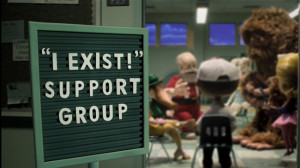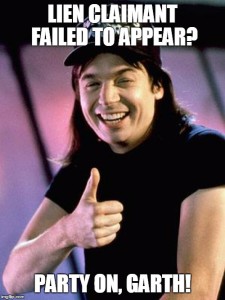One of the frustrating things about this world of ours – this land of workers’ compensation – is the cumulative trauma claim. CT claims, in many jurisdictions, are treated much like the Easter Bunny, Santa Clause, and the non-exhausted workers’ compensation defense attorney: a silly superstition, the existence of which is dismissed as a figment of one’s imagination. 
In California, however, CT claims are very real. Labor Code section 5412 identifies the date of injury for a CT claim is that time at which the injured worker sustained some sort of disability and also knew (or should have known) that the disability was industrially caused. This poses a particular problem in post-termination claims, to which Labor Code section 3600(a)(10) would normally provide a defense.
The post-termination defense also includes several exceptions, one of which is that the defense doesn’t apply when the date of injury is after the date of notice of termination, which leaves open a CT claim and all its wondrous effects on an employer’s experience modification and workers’ compensation insurance premium rate.
The case of Rodarte, a Court of Appeal opinion from 2004 (can you believe that 2004 is more than 10 years ago?) interpreted 5412 to define “disability” as “compensable temporary disability or permanent disability” going further to conclude that “medical treatment alone is not disability, but it may be evidence of compensable permanent disability, as may a need for splints and modified work.”
Well, the issue came up again in a recent writ denied case, known by the WCAB as Polanco v. West Coast Drywall and Paint.
There, the WCJ found that defendant had a valid post-termination defense, but the WCAB reversed, reasoning that his date of injury (rather than his last date of injurious exposure) was after the notice of termination. Because applicant missed no time from work prior to his termination of employment (even though he was self-modifying and have others do some of his job duties for him). In short, the WCAB found that the facts did not support a finding of a date of injury prior to the notice of termination, thereby defeating defendant’s post-termination defense.
Now, here’s a quote your humble blogger, in all humility, found interesting: “Defendant goes on at length in its Petition regarding when applicant knew that his symptoms were work related. Since symptoms or modified work are not tantamount to disability pursuant to Rodarte, and applicant did not sustain disability until after notice of termination, our prior opinion did not discuss when applicant knew his symptoms or need for modified work were work-related, and we need not do so here, since it is irrelevant to the issue of when applicant was first disabled.”
An allegation of a cumulative trauma is one that alleges that, rather than any specific instance, the repeated discharge of an injured worker’s job duties cumulatively caused an injury. How can knowledge of industrial causation be irrelevant in this case?
Take a look at Labor Code section 5400 – “no claim to recover compensation under this division shall be maintained unless within thirty days after the occurrence of the injury which is claimed to have caused the disability or death, there is served upon the employer notice in writing …” Also, take a look at 5403: “the failure to give notice under section 5400 … is not a bar to recovery under this division if it is found as a fact in the proceedings for the collection of the claim that the employer was not in fact misled or prejudiced by such failure.”
One of two things happened in this scenario: either the injured worker continued to do things that caused a cumulative trauma (or injurious exposure) until his last day, even though co-workers were doing some or all of the injuries activities for him; or, the work that he actually did do himself continued to cause an injury. In either case the issue of whether he knew that his work was causing an injury should be relevant. An employer, with knowledge that its employee is injured (or being injured) can provide more immediate medical treatment, can provide time off or official modified duties, and, overall, can move to mitigate the harm done and the ultimate cost of the claim.
Instead, by keeping the claim a secret, an employee who knows the work is causing an injury is making matters worse for himself and for the employer. In such a case, the employer IS misled AND prejudiced by the failure to report the claim, as contemplated by Labor Code section 5403. Furthermore, the legislature, in all its wisdom, knows how to write the term “date of injury” and yet declined to do so in section 5400, instead writing “the occurrence of the injury which is claimed to have caused the disability” suggesting a distinction between the two.
And, let’s not forget that both the Supreme Court and the Court of Appeal have placed considerable weight in the subjective knowledge or believe by the injured worker that his injuries are caused by work. Although, to be fair, those cases dealt more with a statute of limitations defense than the post-termination defense.
Why is it, then, that we have a post-termination defense at all? Do we want to cruelly punish a worker for losing his job by denying him recovery for an industrial injury? Or perhaps we would like to add insult to injury by compounding his woes? Your humble blogger submits to you that when a person loses his or her job, there might be room for hard feelings. Hard feelings sometimes lead to spiteful or vengeful actions, such as litigation, including a workers’ compensation claim.
The purpose of the post-termination defense is to protect employers and insurers from some vengeful tactics by disgruntled former employees. If the injured worker KNOWS that the work is causing an injury, and is keeping it to himself, possibly making the injury worse, shouldn’t that be relevant?
I hate to use the “F” word on a family-friendly blog, but is that really –wait for it– Fair?





